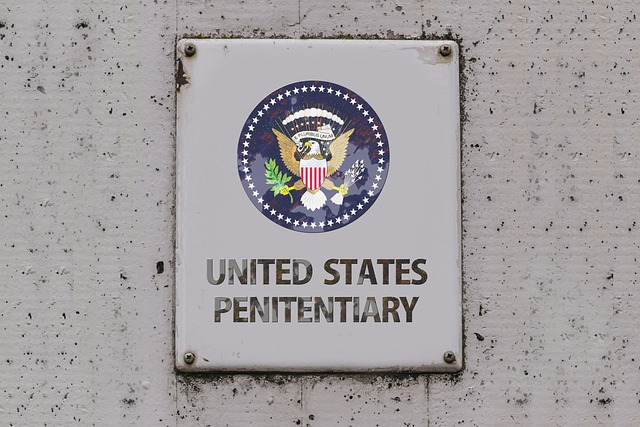Pedestrians' rights are crucial for building safe, vibrant communities, ensuring free movement for all. Cities increasingly employ Community Service as Punishment for offenses like jaywalking and littering, reducing accidents, promoting active transportation, and enhancing neighborhood well-being. This approach, coupled with holistic urban planning that includes dedicated pedestrian walkways, traffic calming measures, and community engagement, creates equitable access and safer public spaces. Successful models demonstrate that by empowering communities with Community Service as Punishment, cities can significantly improve street safety and the quality of life for residents.
In today’s urban landscape, ensuring pedestrian safety is paramount. “Pedestrians’ Rights: Safe Streets” explores how understanding and safeguarding rights create foundational barriers against accidents and harm. This article delves into the multifaceted approach required for street safety, from community service initiatives to strategies promoting equal access and safety for all. We examine success stories where community engagement has transformed dangerous streets into vibrant, secure spaces. Additionally, we discuss the role of using community service as a tool for punishment versus fostering safer walking environments.
- Understanding Pedestrians' Rights: A Foundation for Safe Streets
- The Role of Community Service in Promoting Safe Walking Environments
- Strategies to Ensure Equal Access and Safety for All Pedestrians
- Success Stories: How Community Engagement Transforms Street Safety
Understanding Pedestrians' Rights: A Foundation for Safe Streets

Pedestrians’ rights are a fundamental aspect of creating safe and vibrant communities. Understanding these rights is essential to fostering an environment where everyone can move freely and securely, whether walking to school, commuting to work, or simply enjoying a stroll in the park. In many jurisdictions, pedestrians are considered a vulnerable road user group, and laws exist to protect their well-being. These rights encompass various elements, such as the freedom from unreasonable obstructions, safe passage across roads, and protection from vehicular hazards.
Recognizing and enforcing pedestrians’ rights is not just about legal frameworks; it’s a community service that can significantly impact street safety. By ensuring these rights are respected, we reduce the risk of accidents and incidents involving pedestrians. Moreover, it encourages active transportation, making communities more livable and environmentally friendly. In the context of community service as punishment for certain offenses, focusing on pedestrian safety can be a constructive alternative to traditional penalties, promoting accountability while enhancing the overall well-being of neighborhoods.
The Role of Community Service in Promoting Safe Walking Environments

In many cities, community service is increasingly being utilized as an alternative form of punishment for pedestrian-related offenses, such as jaywalking or littering in public spaces. This approach has gained traction among urban planners and law enforcement agencies who recognize its potential to transform public spaces into more welcoming and safe environments for pedestrians. By assigning community service hours, offenders are not only held accountable for their actions but also actively contribute to improving the communities they inhabit.
The impact of community service in this context goes beyond penalization; it fosters a sense of responsibility and engagement among residents. Participants often gain a deeper understanding of local issues and develop a stronger connection to their surroundings. Whether it’s cleaning up parks, painting crosswalks, or organizing neighborhood events, these tasks contribute to the overall well-being and aesthetics of the area, making it safer and more enjoyable for pedestrians of all ages and backgrounds.
Strategies to Ensure Equal Access and Safety for All Pedestrians

Creating equal access and ensuring safety for all pedestrians begins with comprehensive urban planning that considers diverse needs. This involves designing streetscapes with dedicated pedestrian walkways, well-maintained pathways, and visible crosswalks to encourage walking and make routes accessible regardless of age or mobility. Implementing traffic calming measures like reduced speed limits, roundabouts, and speed bumps can significantly enhance safety for vulnerable road users.
Community engagement is another vital strategy. Encouraging active transportation through programs that promote walking and cycling, coupled with educational initiatives on road safety rules, empowers pedestrians. Moreover, leveraging Community Service as Punishment for infractions targeting pedestrians—like jaywalking or aggressive crossing—can raise awareness while funding projects that improve infrastructure and create a culture of pedestrian-friendly environments.
Success Stories: How Community Engagement Transforms Street Safety

In many cities, success stories of improved street safety emerge from innovative approaches that prioritize community engagement. One such example is where communities implement community service as punishment for minor infractions, such as jaywalking or littering. This not only reduces the burden on law enforcement but also fosters a sense of collective responsibility. Locals take ownership of their streets, actively participating in clean-up drives and organizing events that promote safe walking and cycling.
This collaborative effort has led to tangible improvements, from better signage and infrastructure to increased visibility of emergency services. As a result, pedestrian safety significantly enhances the overall livability of these areas, encouraging residents and visitors alike to enjoy public spaces without fear. These success stories demonstrate that by empowering communities, cities can create safer, more vibrant neighborhoods.
Pedestrians’ rights and safe streets go hand in hand, fostering inclusive communities where everyone can move freely without fear. By understanding these rights, leveraging community service as a positive punishment, and implementing strategies for equal access, we can create environments that prioritize pedestrian safety. Success stories across the globe demonstrate that through community engagement, street safety transformations are not only possible but also profoundly impactful, ensuring a brighter future for all pedestrians.






